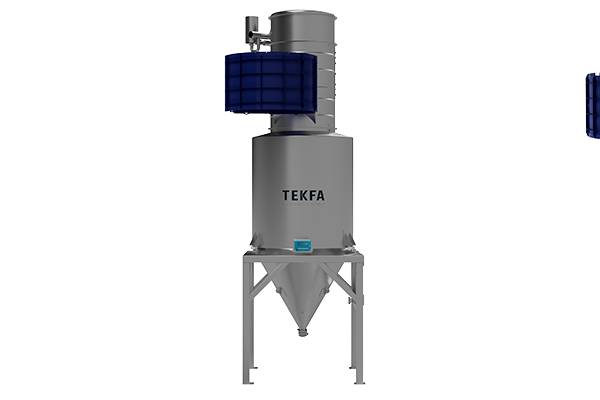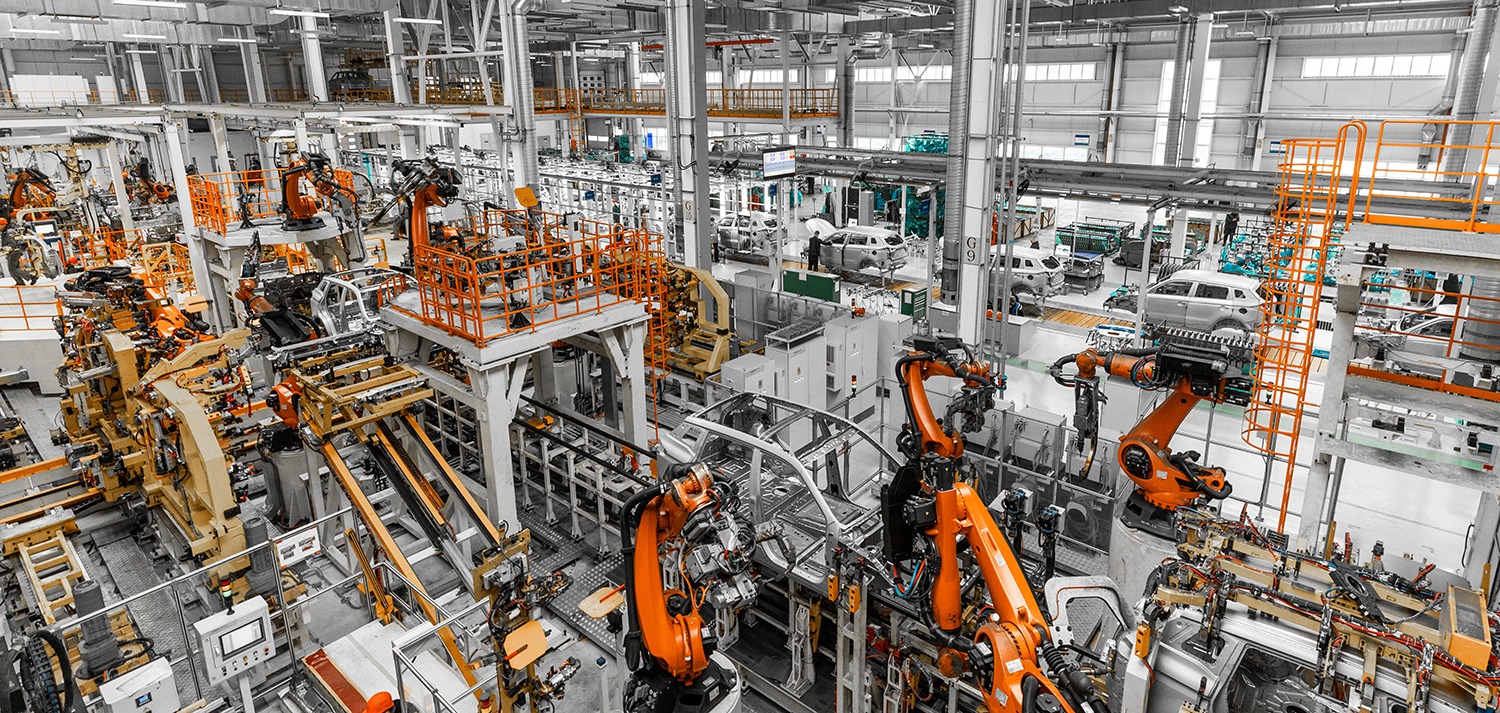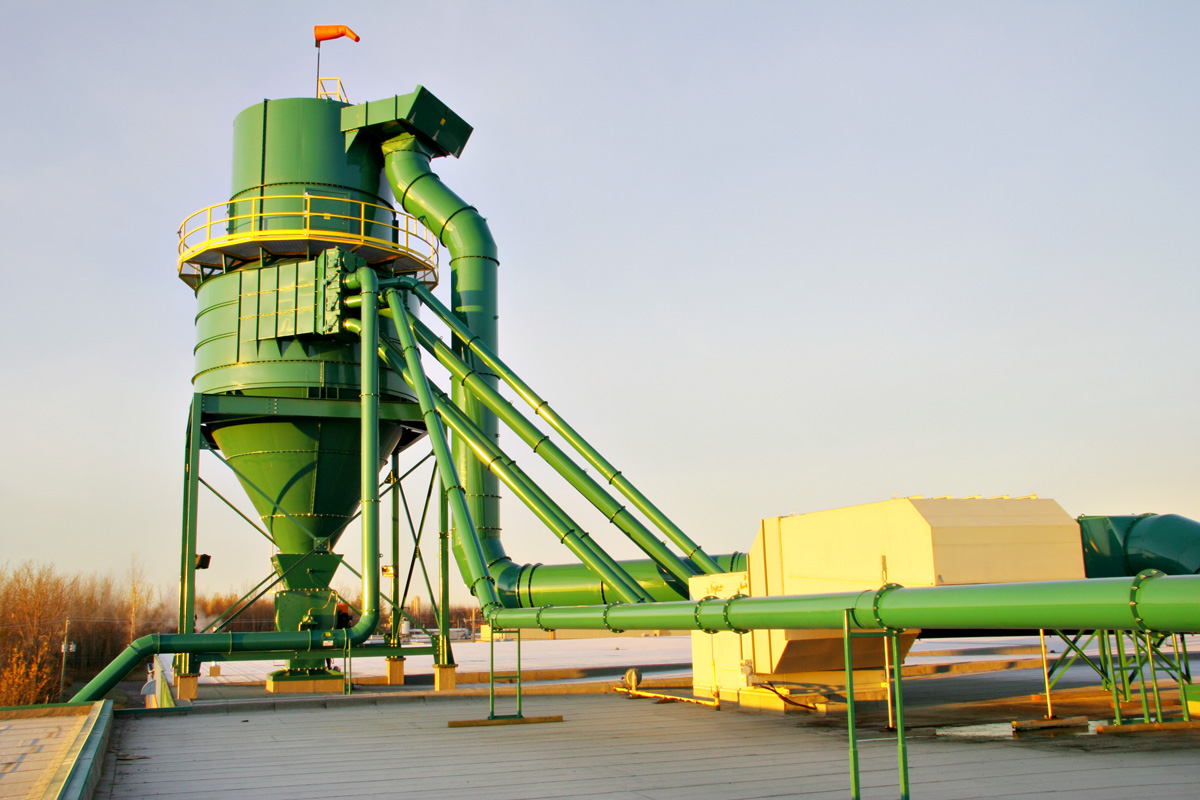Cyclonic Filter: an intelligent choice for air purification in industrial settings
Today we will speak about air purification problems in industrial settings specifically in the tissue sector. Why is the cyclonic filter important in this matter?
What is a cyclonic filter?

The cyclonic filter is a device specifically designed to separate from the air all those solid or liquid waste particles that have a specific weight and dimensions larger than the particles normally found in the environment.
The mechanism of this filter relies on its cylindrical structure, combined with the centrifugal motion of the air and the force of gravity. These components work synergistically to obtain cleaner air by isolating and collecting any residual dust or waste particles, preventing their dispersion into the environment.
In particular, the cyclonic filter consists of:
- the main body: which is the cylinder through which the air passes.
- The inlet channel: where the centrifugal motion of the air begins, pushing waste particles along the cylinder’s walls due to the flow’s power. In this step, the effective separation of particles from the gaseous motion takes place.
- The lower conical body: the final part of the filter where all waste particles are deposited, is attracted downward by gravity and can then be disposed of or used as thermal energy.
- The cyclonic filter’s structure: starting as a cylindrical shape and narrowing into a funnel, serves a specific purpose.
This conical shape allows for:
- the air to gain speed, increasing the vortex’s power inside the cylinder.
- An accurate separation of waste residues from the air, thanks to the centrifugal motion’s velocity.
- Proper and thorough collection of polluting residues and waste in the air within the final part of the cone before being directed to discharge.
Due to its characteristics, the cyclonic filter and the dust and fume suction systems in general, like those of Sorgato, have become a highly sought-after product, not only by tissue companies but also by various businesses in different fields.
The reason lies in the product’s great versatility, which can be customized to fit the measurements and specifications of various companies according to the customer’s requirements.
Why Install a Cyclonic Filter?
Several environmental and economic advantages can be highlighted when choosing a cyclonic filter.
It is an extremely adaptable tool to meet the customer’s needs and align with their internal policies.
In particular, based on the feedback from various companies, the main strengths are evident:
- the disposal of collected dust and debris is carried out according to the company’s instructions.
- The work of a cyclonic filter equals that of two production lines in a single plant, making it a good purchasing choice for cost savings.
- Waste dust can be used as an energy source. Some companies use a briquetting machine to create discs for burning, producing thermal energy.
- The installation costs of the device are relatively low, covering both maintenance and operating expenses.
But it didn’t end there. Furthermore, the cyclonic filter’s work is often complemented by other devices to enhance performance.
For example collaborating with drum or bag filters, which assist in collecting airborne dust but do not autonomously dispose of the collected dust. They can use the cyclonic filter to take advantage of its discharge function and eliminate the collected waste.
Or else using a briquetting machine, which recovers the waste material collected by the filter, producing fuel that is used for thermal energy production, could be a sound recycling solution and also an economical advantage for business.
In conclusion
the cyclonic filter is a commendable alternative recommended for all entrepreneurs to implement in the ventilation systems of companies and industries, promoting environmental well-being, health, and economic savings.


















